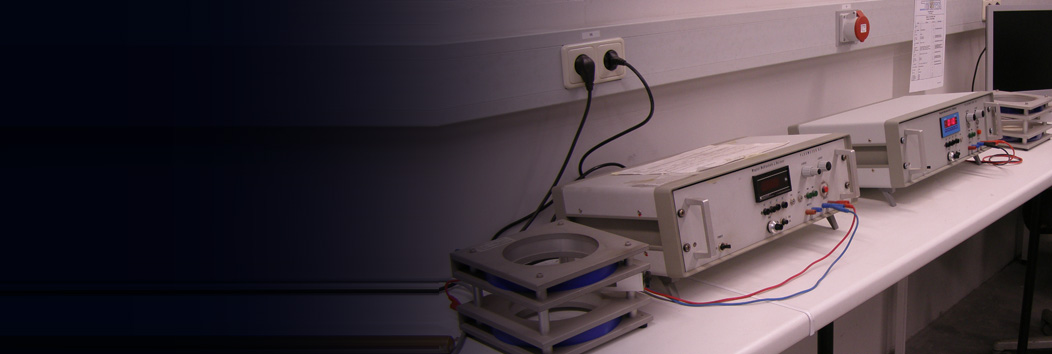Magnet technology A-Z
Air Column:
The space between the poles of a magnetic system where an effective magnetic field exists. In the case of adhesive magnets, also the intermediate layer of the adhesive surface to the magnetic surface (e.g. varnish) causes a reduction of adhesive power.
AlNiCo:
A magnetic material of the alloy materials Aluminium, Nickel, Cobalt, Copper and Titanium. Its Manufacturing process is the sintering or casting method. Economical machining is only practical by use of grinding method. Operatin temperature up to 500°C.
Anisotropic:
It represents the crystalline orientation in one direction generated during the magnetic production to improve the magnetic properties. They are magnetized in a superior way.
Barium-Ferrit:
Ceramic magnetic material. Please refer to Hard-Ferrite.
Coercive Force:
Hc = Force of the demagnetized field, where B equals.
DIN 17410:
Identifies a summary of all used magnetic materials, including the definition of the magnetic minimum values, as well as manufacturing tolerances for untreated sinter or castings. All of our products are manufactured according to the above mentioned DIN standard.
Energy product:
BxH represents the output of the magnetic induction B and the field strength H. The energy product represents an efficiency degree of the permanent magnetic materials, which indicates the amount of energy accumulated in the material and available for the working air column. Unit = 1kJ/m³ = 1,256 x 10^5 GOe.
Field strength, magnetic:
The special condition in and around a magnet is known as the magnetic field. In order to identify the field, the line of force is used. The field strength is evaluated through the number of lines, which permeate a standard surface vertically towards the line of force direction i a volume unit. H identifies th line of force density.
Unit = 1 A/m = 0,01256 Oe.
Flow density:
Density of the lines of force of the induction field.
Unit = 1 Tesla = 10^4 Gauss.
Gauss:
Old way of describing the unit of magnetic induction (1 Gauss = 10^-4 Tesla).
Adhesive Power:
This is the force necessary to section off a work piece during full bearing of the adhesive magnet on the surface, vertical to the adhesive surface. In addition, the adhesive power is governed by the surface quality, the material, the size and the depth of the adhesive surface. The maximum tensile strength is achieved with full bearing on a surface without roughness (air column = 0). With an air column of 0,2 mm only 75 % of the indicated adhesice power is available. In case of low carbon content, non-alloyed steel (St37) the resulting percentage reductions in the adhesive power of 100 % for the following materials: C 10 - 10 %; cast steel - 40 %; 20MnCr 5 - 50%. The magnetic flow depends on the depth of the adhesice surface and should roughly comply with the distance between the poles of the adhesive magnets; which means a thin sheet will be sufficient as adhesive surface for a small stick magnet or a multipolar magnetic system with slight distances of the poles. A larger adhesive magnet with superior adhesive power requires a deeper adhesive surface of several millimeters as magnetic conclusion.
Hard Ferrite:
Hard Ferrite is s ceramic permanent magnet ferrous material, which consists of Barium or Strontium-Oxide and ferrous oxide. It is manufacrtured in the sintering process. Due to its brittleness and hardness it can only be machined economically by the use of grinding methods. Operating temperature up to 200°C.
Magnetic Circuit:
All flowing through parts of a permanent megnetic system - magnet, soft iron poles, air column and distribution field.
Magnetic Pole:
This identifies the area of the magnet where the lines force occur or emerge in great density. Opposite poles attract each other, whereas homologous poles reject each other. The two poles are described as north and south pole.
Moving Force:
This is the force necessary for the parallel movement of a magnet on the adhesive surface. It is governed by the condition of the surface and amounts to approximately 20 - 35% of the adhesive force.
Neodymium-Iron:
Currenty the magnetic material with the highest magnetic nergy values which can be poced economiclly. It is manufactured in the sinter process. Due to its brittleness and hardness it can only be machined economically by use of grinding methods. Operating temperature up to approx. 80°C.
Oxide Magnet:
Ceramic magnetic material of Barium-Ferrite or Strontium-Ferrite. Please refer to Hard Ferrite.
Permeability:
"Permeability" of magnetic lines of force; the ratio between the magnetic induction B and magnetic field intensity H.
Rare Earth:
The so-called basic material required for the production of permanent magnets with high quality ratings and maximum coercive field strength. Neodymium, Cerium and Samarium are amongst the rare earth materials.
Residual Magnetism:
B, the remaining induction inside a compound, which has been exposed to a magnetic field.
Tesla:
Unit of magnetic Induction. 1 Tesla = 10^4 Gauss

